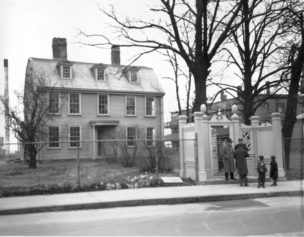HAVANA — Kathleen Murphy Skolnik gasped one recent morning as she gazed up into the stairwell of a 1939 downtown apartment building here and pointed at the chevron pattern in the ironwork, at the unpolished rust-pink marble and a simple alcove on the stairway crowned by a stepped arch.
“It’s so beautiful,” said Skolnik, an architectural historian who lives in Chicago. “And it’s so rundown.”
Skolnik’s words serve as an unofficial motto for the rich, wide-ranging and often neglected buildings that, experts say, make Cuba one of the world’s most significant but overlooked troves of Art Deco architecture.
As some 250 Cuban and foreign connoisseurs gathered last week in Havana for the World Congress on Art Deco, there was hope the event would foster wider recognition of the island’s Art Deco heritage and the urgent need to preserve it. (The gathering, of the World Congress of the International Coalition of Art Deco Societies, ends on Thursday.)
“Part of our purpose is to make a lot of noise,” said Gustavo López González, deputy director of the National Museum of Decorative Arts, and one of the organizers. “If we in Cuba don’t appreciate the value of these buildings, how can we expect people from overseas to do so?”
Havana is renowned for its crumbling elegance, and over a million visitors each year stroll among the colonial buildings of Old Havana, many of which were built between the 16th and 18th centuries and carefully restored over the last 30 years.
But Havana, like many of the island’s provincial cities, is peppered with Art Deco houses, apartment buildings, cinemas, theaters, hospitals and office buildings that range from the bold, vertical skyscraper style to streamline moderne with its cool horizontal lines and curved corners.
These landmarks are not as grand as the Chrysler Building in New York, and there is no Art Deco district like Miami Beach’s, but fans say there is an unusual wealth and diversity of stock, much of which has remained standing — if poorly maintained — through 50 years of Communist rule.
On the edge of the Old Havana district, for example, stands the elaborately ornamented, French-influenced, Bacardí Building (1930), with its small ornamental ziggurat pinnacles and facade decorated with a delicate gold-leaf zigzag patterns and bronze bats, the Bacardí rum logo.
On the main boulevard of the artsy Vedado neighborhood is the 1927 mansion of a famous high-society couple of the period, Catalina Lasa and Juan Pedro Baró; its interior boasts glass windows by Lalique decorated with shell-like coils and sunbursts, and a grand staircase with laminated silver-plate banisters that is lighted by tall windows of colored Baccarat crystal. Further west, on a monumental plaza, stands the imposing Worker’s Maternity Hospital (1939), laid out in the shape of a pair of fallopian tubes.
Read more: NYTimes


